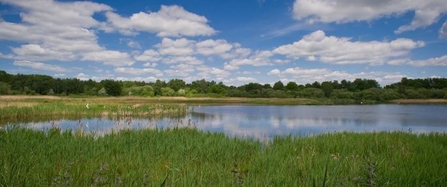
Matthew Roberts
Paul Wilkinson, Head of Living Landscape at The Wildlife Trusts, said:
“The reasons for the recent flooding are complex and it is important that local authorities and government agencies are not forced to rush into knee-jerk solutions, such as inappropriate dredging, which could end up causing more problems downstream.
“It really is unacceptable to have had thousands of people in communities up and down the country devastated by these floods when we know there’s a better way to deal with flooding. Nature has a vital role to play in the future. It is time to take a more imaginative approach; one which tackles a whole range of problems head-on. Natural solutions such as peatland restoration, improved farmland management and wilder city greenspace will make rural and urban landscapes more absorbent and better able to deal with heavy rainfall as well as drought.”
